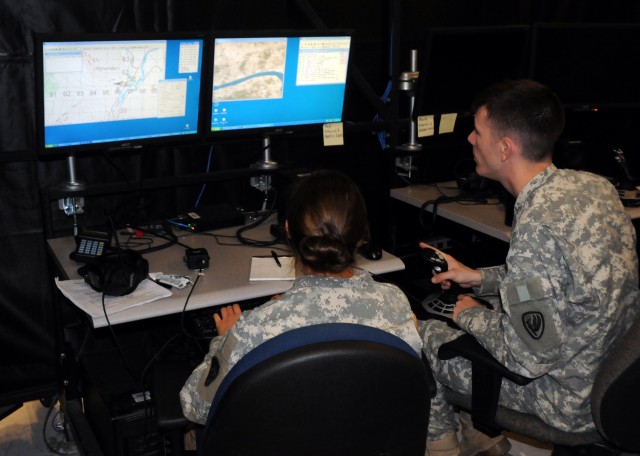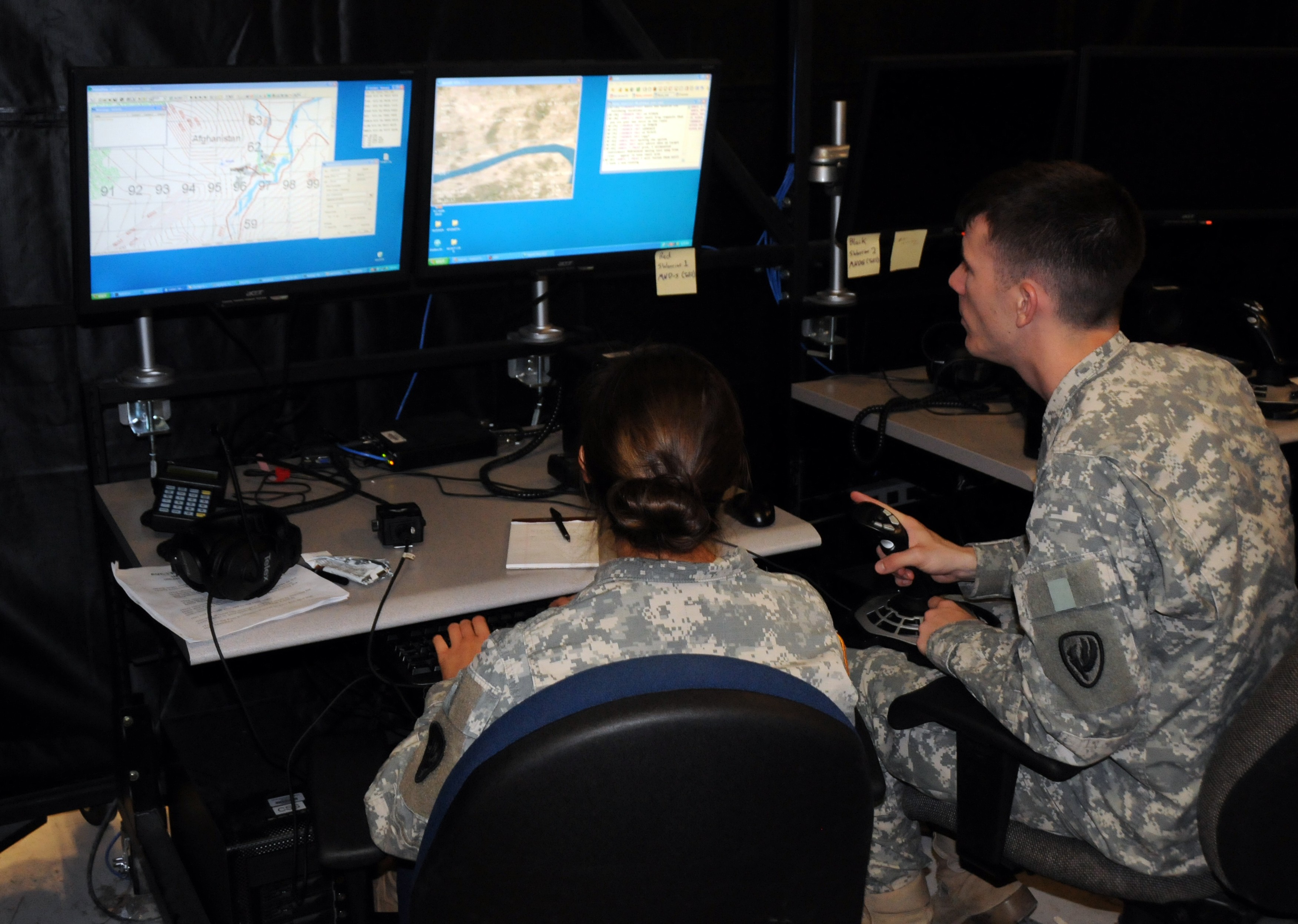FORT RUCKER, Ala. -- Directorate of Simulation staff has prepared combat aviation brigades for the warfight for about 12 years, and recently, the same technologies that allow this were integrated into the Aviation Captains Career Course.
According to Maj. Lee Ambrose, A Company, 1st Battalion, 145th Aviation Regiment platoon and small group leader, the course prepares captains for future roles as company commanders and various other leadership positions.
The training familiarizes captains with how things operate as they serve in those roles, which is important in today's style of warfighting, Ambrose said.
"The overarching goal is to have quick reaction. They need to take data and make decisions in real-time, and that's what this replicates," he said.
Not only do captains serve as commanders and battalion staff, but they also simulate flying the missions in their aircraft, Maj. Daniel Erskine, another small group leader, said. In addition, pilots also practice flying other aircraft in order to learn their capabilities, contributing to the decision-making process, Ambrose said.
The ability to practice battalion- and brigade-level operations as company commanders and high-ranking staff in battalion tactical operation centers is an essential tool, students said.
"It gives you a better operational picture of information flow," said UH-60 Black Hawk pilot Capt. John Mayo, noting this knowledge allows pilots to feed better information into TOCs. "It gives everybody a better picture."
Capt. Dave Hortman, an OH-58D Kiowa Warrior pilot, agreed.
"It gives us a picture of the whole battlefield. It's a good learning experience in a non-threatening environment," he said.
In the past, AVC3 students used DOS simulators to practice company-level events and missions, Erskine said. Recently, though, AVC3 classes have been able to utilize full DOS capabilities to practice battalion- and brigade-level assignments, Ambrose said.
"We took the (Aviation training exercises) model and ran the captains career course through that. We're able to take missions from CABs and put them into scenarios (for us)," he said. "Now, we have four companies of course students, and they are linked all together."
The integration began about 18 months ago, Ambrose said. In order to use the tools DOS has available, AVC3 students needed some mission-planning and communications equipment and software available at their Adams Hall home.
Over time, AVC3 staff purchased the items necessary to conduct mission communications and mission planning in separate rooms. This capability allows students to simulate and plan missions before using DOS' tactical operations centers and simulators.
Before the integration, captains practiced some mission elements by creating layouts by hand. Now, everything is digitally done, which is a benefit, according to Hortman.
"It's time for us to get used to (the digital age)," he said.


Social Sharing